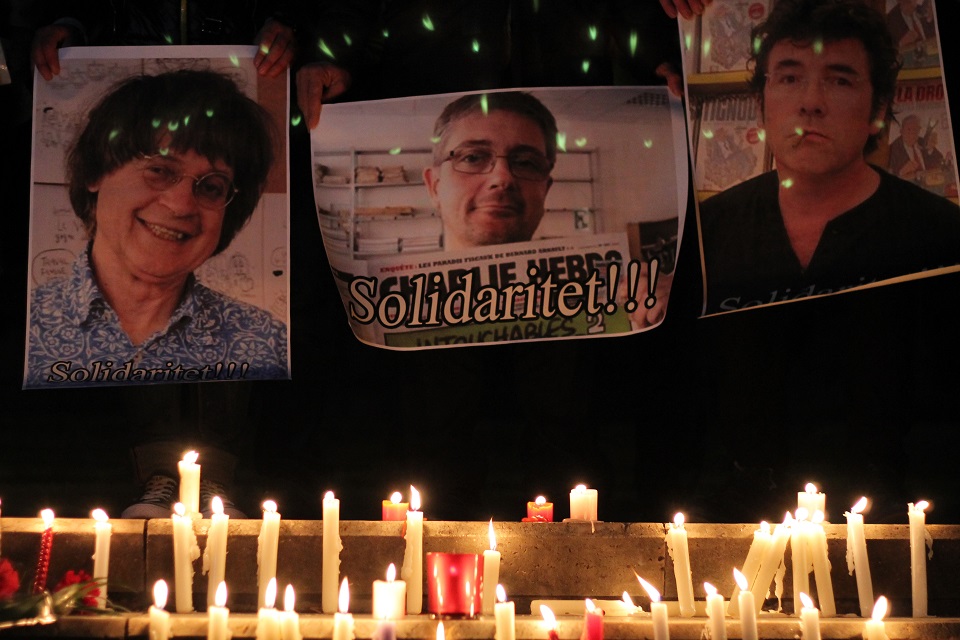Filtered By: Lifestyle
Lifestyle
Four of France’s top cartoonists killed in Paris attack

Albanian journalists hold pictures of French satirical weekly Charlie Hebdo's cartoonists (from left) Jean Cabut aka Cabu, Charb and Tignous during a gathering in solidarity with the victims of the terror attack at Charlie Hebdo in Paris, in Tirana on January 7, 2015. France's Muslim leadership sharply condemned the shooting at the Paris satirical weekly that left at least 12 people dead as a "barbaric" attack and an assault on press freedom and democracy. AFP PHOTO/Gent Shkullaku
They included the editor-in-chief of the publication, Stephane Charbonnier, known as Charb.
The other three were: Jean Cabut, known across France as Cabu; Georges Wolinski; and Bernard Verlhac, better known as Tignous.
The killings shocked France, all the more so because the cartoonists had for decades filled the public imagination with drawings that gave bite to current events.
Also shot dead was popular economist Bernard Maris, 68, not a cartoonist but well-known for his Charlie Hebdo editorials and national radio commentaries.
Here are some details on each of the cartoonists:
Charb: Stephane Charbonnier, 47
Charb took over the running of Charlie Hebdo in 2009 after joining its staff in 1992. His irreverent caricatures of politicians and other figures mostly appeared in the publication, but also popped up in many other leftwing outlets and outright comics.
He had been living under police protection after receiving death threats for Charlie Hebdo's run of a Mohammed cartoon in 2011, which also saw the newspaper firebombed and its website hacked.
Cabu: Jean Cabut, 76
Cabu traced the times he lived in for nearly six decades, sparing no-one and nothing: not presidents, not the military, not religion. In that, he carried on a tradition of French pamphleteers.
Cabu's most enduring creation was the "Beaufs", caricaturing the worst of French complainers, racists and jingoists.
But it was cartoons he did of the Prophet Mohammed for Charlie Hebdo, among his most caustic work, that brought ceaseless death threats upon him and the newspaper's staff.
"Cartoonists live on stupidities and that will never be turned back," he once said.
Wolinski: Georges Wolinski, 80
Wolinski was a legend in French cartooning, with work stretching back to well before Charlie Hebdo's beginning in 1970.
Born in Tunisia in 1934 to a Polish father murdered when he was just two years old, and to an Italian mother from Tuscany, Georgie, as he was called by his grandmother, discovered comic books from US soldiers deployed to North Africa.
Arriving in Paris at the end of World War II, he started illustrating his high school newspaper and then moved on in 1961 to a publication called Hara Kiri. When that paper was ordered closed by officials, he moved on with its staff to start Charlie Hebdo.
"We used cartoons to talk about the times we lived in, about society, about women," he said.
In the 1980s and 1990s, Wolinski struck out on his own to work for several of France's leftist mainstream newspapers and magazines. In 1992 he returned to Charlie Hebdo while also publishing his own comic book work separately.
Tignous: Bernard Verlhac, 57
Less well-known than the others, but still very much appreciated in the industry for his corrosive touch and energy, Verlhac had been a cartoonist for the French press since the 1980s. He worked for several other outlets at the same time as for Charlie Hebdo.
"A newspaper cartoon is extremely difficult to get right because you have to get everything into just one frame. It's the opposite of comics," he once said. — Agence France-Presse
More Videos
Most Popular




